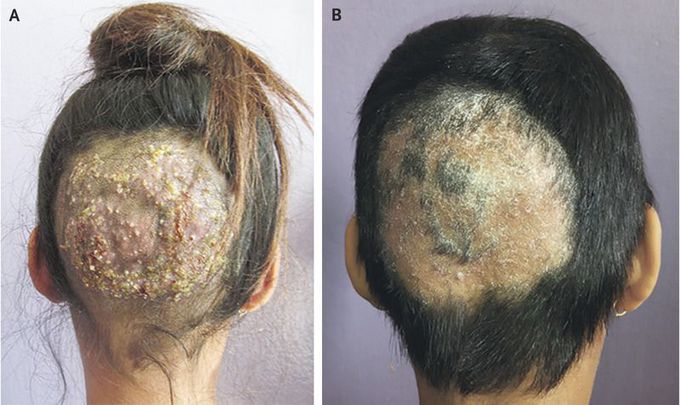


Kerion — A Boggy Lump
A 13-year-old girl presented with a slowly enlarging, painful swelling of the scalp that had first been noticed 3 weeks earlier. She had received several courses of empirical oral antibiotics for suspected bacterial folliculitis and cellulitis, without improvement. On examination, there was an erythematous, mildly tender, boggy swelling overlying her occiput (Panel A). The lesion was studded with pustules and had associated serosanguineous discharge and alopecia. A sample from the involved area was obtained, and a 10% potassium hydroxide preparation revealed fungal hyphae and confirmed the diagnosis of a kerion. A kerion is an inflammatory, dermatophytic, fungal infection of the scalp that is usually seen in children. It is characterized by a suppurative, tender swelling that is often associated with regional lymphadenopathy and can be mistaken for bacterial folliculitis. Kerion is most commonly caused by the zoophilic dermatophytes Trichophyton verrucosum and Trichophyton mentagrophytes. Treatment with oral griseofulvin is often used, although other antifungal agents may also be effective. A delay in diagnosis and treatment can result in scarring alopecia. This patient was treated with griseofulvin for 6 weeks and showed marked improvement, with regression of the lesion (Panel B).
A painful, pus-filled bump under the skin caused by infected, inflamed hair follicles. Boils form under the skin when bacteria infect and inflame one or more hair follicles. Usually self-diagnosable Boils start as red, tender lumps. These fill with pus, grow, then rupture and drain. A carbuncle is a cluster of boils. Treatment consists of self care Warm compresses can help a boil mature and drain. Large boils and carbuncles need a doctor's attention.

